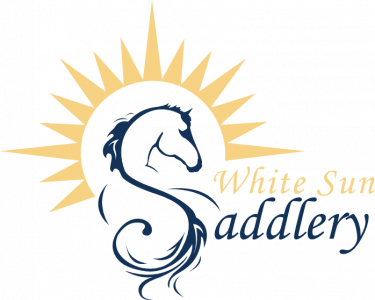It’s a universal truth that horses are expensive. As riders, it only makes sense that we want a good deal on our equipment. And, since the wisdom of Terry Prachett’s Vimes Boot Theory can also be applied to tack, then used, quality brand saddles seems like a logical way to go. But is it?
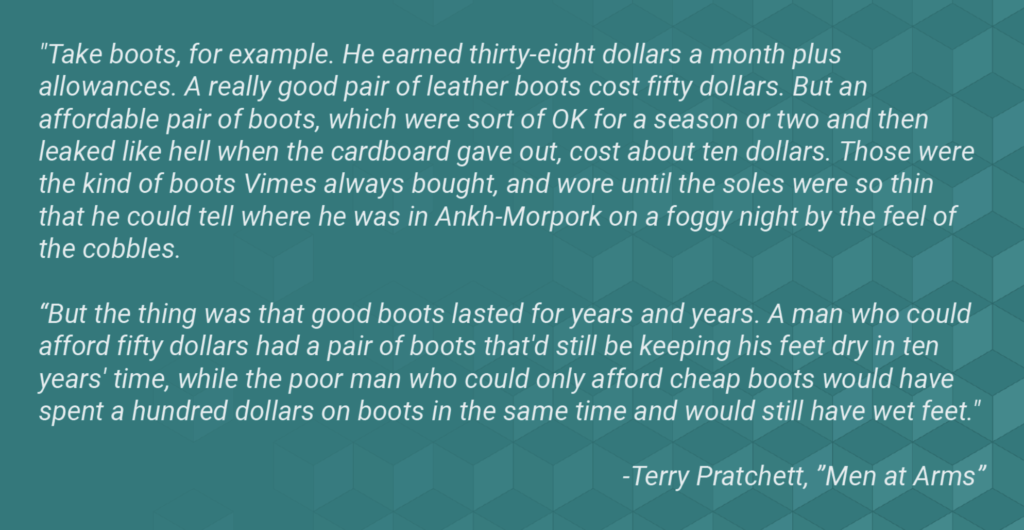
While quality saddle brands employ construction techniques that create a better, longer lasting saddle that is more likely to fit better from the start, a used saddle has a life the buyer knows little about, much like our horses. Excellent values can be found, but it takes a bit of detective work to be sure of them.
There are several ways a saddle can be compromised without the rider being aware. Some of these are common and easy to find or fix, others less so.
Tree— It’s true a strange squeak or wrinkle in the seat are no longer sure signs of a broken tree, but the tree can still be broken, even if no marks show on the outside of the saddle. Riding a horse too wide or too narrow for the saddle, for instance, not only puts uneven pressure on the horse, but also on the head plate of the saddle, leading to broken rivets and even a broken head plate over time. Every used saddle should be flexed in all directions to check the integrity of the saddle, but there is no guarantee the tree is sound without an inspection.
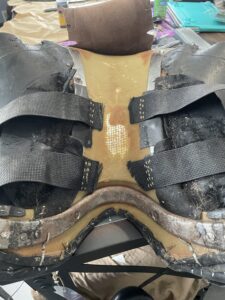
Girth Straps— It’s easy to check the billets where the girth is fastened, but what of the webbing they’re attached too? If the girth is repeatedly tightened incorrectly the webbing can wear at the attachment on the tree. This can be a serious safety risk, and is only visible when the saddle is disassembled.
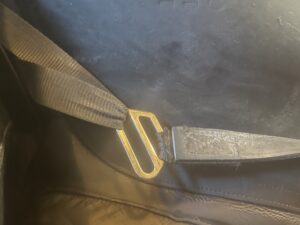
Stirrup Bars— Stirrup bars can be bent, or rivets broken, leading to a safety issue. If attached too close to the tree, they may cause uncomfortable pressure points for the horse. Most of these things can be found on visual inspection of the saddle.
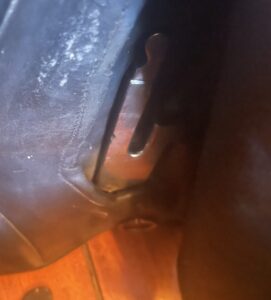
Panels— The benefit of wool flocked panels is that they can be adjusted and conform to the horse. Without regular maintenance, however, this can prove to be a problem in used saddles. Nearly every used saddle will show at least some asymmetry in the panels where the previous horse reshaped them through movement. Rarely will this change suit the prospective new horse. If the panels have gone without maintenance for a number of years, the leather itself may be misshapen as well. In this case, the panels will need to be removed and restitched accordingly. In other cases, the asymmetry can be addressed with a spot flock, but most often flocking in an older saddle has not been replaced for years, leading to compacted wool that does not move well and needs to be replaced.
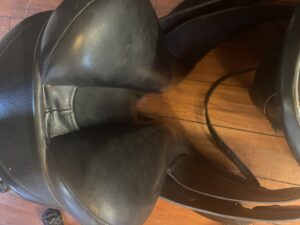
Longevity— We’ve often heard a saddle can last a lifetime, and we can certainly wish it to be true when we find the perfect saddle. Those dream saddles are special. Even so, a saddle is made of materials that degrade over time and is put through hard use in all kinds of weather. A saddle’s safe lifetime is more like fifteen years. Hopefully most of us will be riding a lot longer than that. But that also means your used saddle has clocked quite a few of those miles. In order to get the top brands at a low price, those saddles may have only a few years left in them.
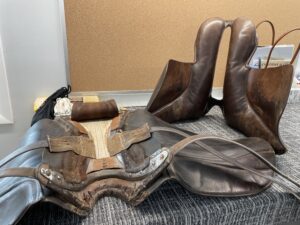
While many of things things can be caught on a careful inspection, there are some key points that can only be managed in a saddle fitter’s workshop, something that can’t be done until after the purchase is made, and that may be too late if a broken rivet or tree is discovered. Most used saddles would benefit from a panel removal, tree inspection and new wool. The need to check the tree for proper fit before this is done, and then have the saddle adjusted to the horse after will mean extra visits with your saddle fitter. If you are buying used saddles online or testing one at a time, you may also find yourself needing extra visits with your saddle fitter as well as shipping costs.
Used saddle shopping should include:
- Horse inspection and panel tracing for initial tree size and shape
- Visual inspection of potential saddles for potential fit, stitching quality, panel condition, girthing strap & stirrup bar condition
- Flexion of saddle for tree testing
- Fit test for rider
- Fit test for horse
- Ridden test for horse and rider
- Panel drop for tree inspection and wool replacement (for most saddles)
- Billet replacement if necessary
- Fit adjustment on horse
So, when looking at the value of your used saddle, include the cost of shipping, extra fitting visits, and any benchwork your saddle may need, then consider the cost versus the number of years likely left to the saddle. If it still works out to be a good value, congratulations, you’ve found a gem.
Saddle cost per year = Saddle cost + shipping costs + fitting costs + benchwork costs/ 15 years – saddle age
But new saddles are expensive. According to Vimes and what we’ve seen here, they could save you money over time, but check out how to get the most value from your new saddle here.
